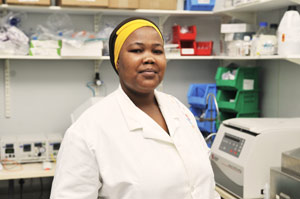The other day a friend shared this analogy. He said: “The ANC is like a delirium eagle that is violently flapping its wings destroying its own nest, it must be helped before it is too late.”
He also said political in-fighting, slate politics, and the succession debate within the ruling party could force the 104-year-old liberation movement to implode.
How true are his observations? (Don’t look at me).
Over the past months, it seems no or little attention is drawn towards the party’s crucial policy discussion documents that are currently out for review and comment.
Recently Naledi Pandor, the chairperson of the African National Congress (ANC)’s NEC Subcommittee on Education and Health launched the party’s policy discussion documents ahead of its 5th National Policy Conference to be held from the 30th of June to the 5th of July 2017.
In a media statement Pandor said the policy discussion document provides the framework for in-depth discussions and assessment of the work done over the last five years by the Subcommittee and each of its sectors.
She says the principal objective of the discussion documents is also to enable all its members to review the implementation of policies adopted at the 53rd National Conference and to propose areas for policy review or new policies towards the 54th National Conference, to be held in December 2017.
“Education and health are priorities for the ANC and the country; and that Science, Technology, and Innovation is a critical catalyst for social and economic development the world over,” says Pandor.
She says the discussion document has four critical elements:
- Firstly, it is a tool aimed at stimulating debates in the ANC, in communities and amongst stakeholders on issues that are relevant to the sector including proposals on how to serve South Africa best through programmes mentioned herein or proposed. It has three critical elements
- Secondly, it ensures that there is continuity of political thought, analysis, plans and programmes between discussions of the 4th National Policy Conference held in 2012, the 53rd National Conference and those taking place now towards the 5th National Policy Conference and the 54th National Conference. It contains a review of decisions that have been taken since the 53rdNational Conference, including relevant decisions of all NEC meetings, Alliance Summits, resolutions of the ANC Leagues and recommendations of the 2015 NGC.
- Thirdly, it is an assessment of the implementation of ANC resolutions and decisions, including integration of these into the implementation of the NDP Vision 2030 as our national plan for eradicating poverty, unemployment, and inequality. It has identified policy gaps and proposals to remedy these in each of the sectors.
- Fourthly, the report of each sector is structured to communicate action in response to ANC resolutions and Manifesto directives, government policy context; key decisions made between conferences; reports on the implementation of specific projects and programmes in line with resolutions of the ANC from December 2012 to date; reports on the impact on society of implementation of ANC policies and programmes; and policy gaps.
Pandor the health sector has reactivated programmes to ensure that the District Health System (DHS) is functional in all provinces, as a practical step of strengthening Primary Health Care (PHC);
On the much talked about National Health Insurance (NHI), Pandor says lawmakers have gazetted the White Paper on the NHI for public comment in December 2015.
“NHI Pilot sites have been activated to prepare the health system for implementation of NHI; and work on the establishment of the NHI Fund has been progressing steadily and the White Paper on NHI has been finalised waiting for endorsement by Cabinet.”
She says the health sector has performed “extremely well” in its programmes against HIV and AIDS resulting in fewer deaths and increased life expectancy, reduced overall mortality in the country; dramatic reduction of maternal mortality; considerable drop in mother-to-child transmission; reduction in child and infant mortality and a decrease in TB mortality due to successful ARV treatment.
“The sector has instituted game-changing interventions such as GeneXpert testing and has evidence of TB disease burden declining. It is, however, concerned about TB remaining the primary underlying cause of death in South Africa”.
Pandor‘s subcommittee has recommended:
That the health sector continuously strengthens measures to improve the quality of care delivered by health practitioners in the public and private sector
draft and promote policies to curb medical malpractice, high costs of medical insurance and litigation against medical malpractice; adopt a policy for the country to eliminate on or before 2027 all vaccine-preventable diseases which have existing vaccines with proven efficacy; and ensure that the revitalisation of Military Health infrastructure, including acquisition of heath technology, adds to economic growth through jobs created by this activity.
Those who would like to comment on the ANC’s policy discussion document, Pandor says they can do so that via its social media platforms as well through email: “Attention: Education, Health, Science, Technology and Innovation” at communications@anc.org.za

